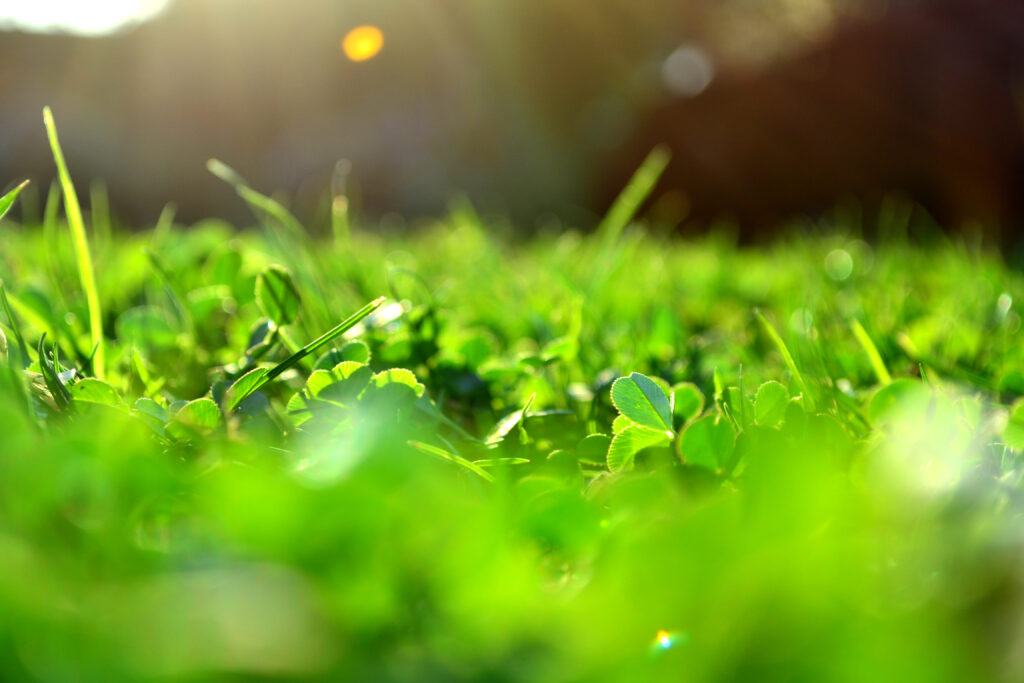50% Off First Application¹
Call 1-855-940-1479
and connect with a TruGreen consultant
When to Fertilize the Lawn
Maintaining a healthy lawn has a lot to do with timing. The best laid plans and well-planted grass can easily succumb to climate variables if not fertilized properly. Many homeowners have a hard time knowing when to fertilize during the growing season.
Listen To Your Lawn
First and foremost, successful fertilizing has everything to do with knowing what your lawn is telling you. If your yard looks dry, dead, or otherwise unhealthy, it’s saying it needs something to restore its health. Oftentimes, fertilizer is the answer.
Signs your yard may need a fertilizer application include:
- Patchy, brown spots that won’t seem to grow
- Slower growing rate or total growth stoppage
- Dry, crumbly soil even when well-watered
- It’s been over a year since you fertilized


Fertilizing by the Seasons
Contrary to popular belief, many lawns only need to be fertilized aggressively once a year. And though most homeowners think spring is the best time for an overall application, fall is actually when nearly every type of lawn needs the most help.
Fertilization has a lot to do with the type of grass you’ve planted. Cool-season grasses such as fescue grow the most during cooler months in fall and spring. Warm-season grasses will hit their peak in summer. The key to successful fertilization is actually fertilizing before your grass needs to grow…most fertilizers are slow-release meaning they’ll provide long-lasting, measured nutrients to your soil for months at a time.
As a general rule, nearly all types of grass need a full-fledged fall fertilization. The best time to apply a heavy dose of nutrients is right as the growing season slows for your grass, or just before it picks up (if you’ve planted a cool-season variety.) Applying a liberal dose of fertilizer in the fall means your grass will have enough nutrients to make it through the winter dormancy and surge again for spring growth.
A spring fertilization is also advised for many types of grass, particularly warm-season varieties. In many cases, it’s smart to cut back on the amount of fertilizer applied in fall, but use the same method of application. With a proper fall fertilization, grass will enter the spring season with residual reserves.
Overfertilizing Can Be the Kiss of Death
Unfortunately, one of the most common mistakes homeowners make is to overfertilize their lawn. Here are a few of the downsides of over-fertilization:
– Your lawn will “forget” how to produce its own nutrients and become dependent on the fertilizer
– Overfertilizing can actually “scorch” your lawn with chemicals, causing a burned, dry appearance
– Too much fertilizer will cause grass to grow at an accelerated rate, meaning more mowing and edging
– Excess fertilizer can throw off the natural growing cycle of your lawn and cause it to grow during inappropriate seasons
If you still have questions or concerns about fertilizing your lawn properly, contact a lawn care professional in your area.

TruGreen will gladly visit your property as often as needed between scheduled visits to make any necessary adjustments and to ensure your satisfaction.
Getting Started with TruGreen
- Call or fill out the form above to reach a lawn care specialist.
- Know the square footage of your yard, as well as any specific areas of concern.
- With the help of your specialist, create a customized lawn care plan that meets your lawn’s needs.
- Schedule your Healthy Lawn Analysis2 to start your service.
